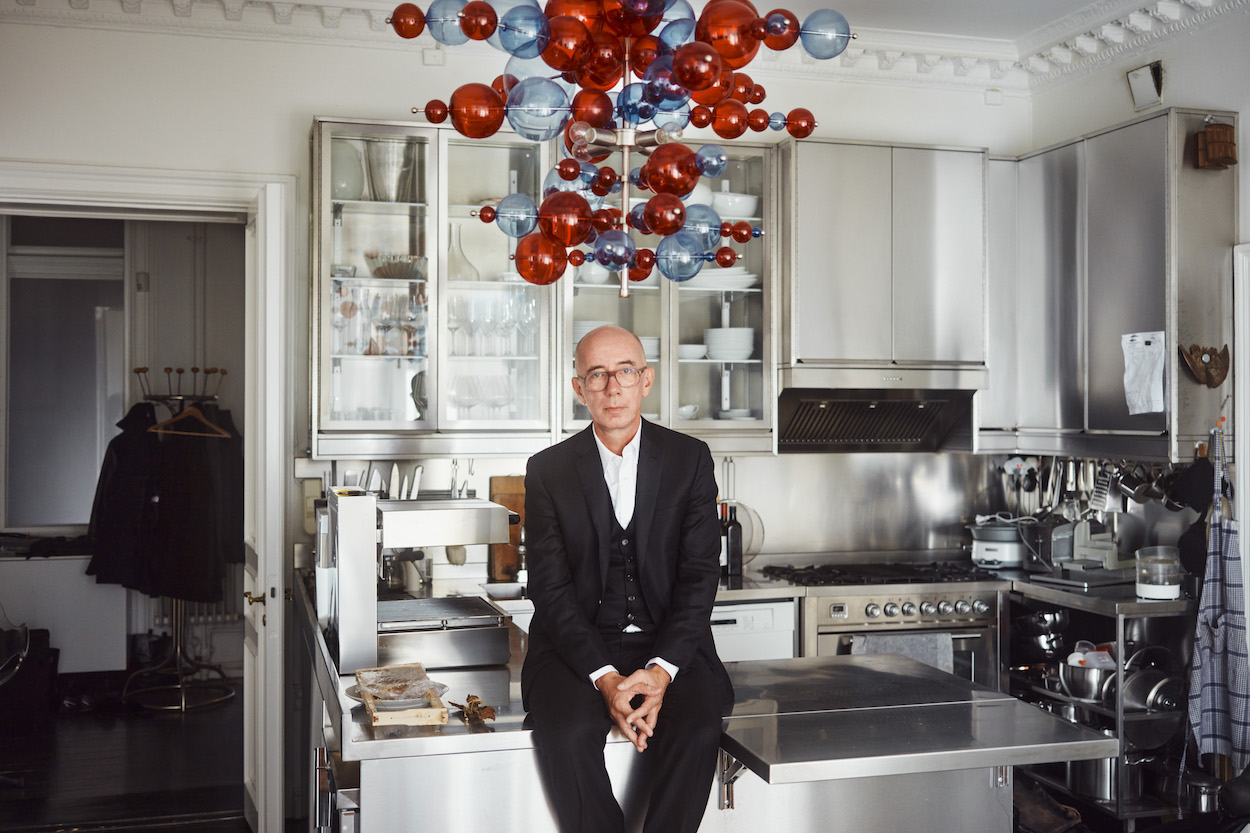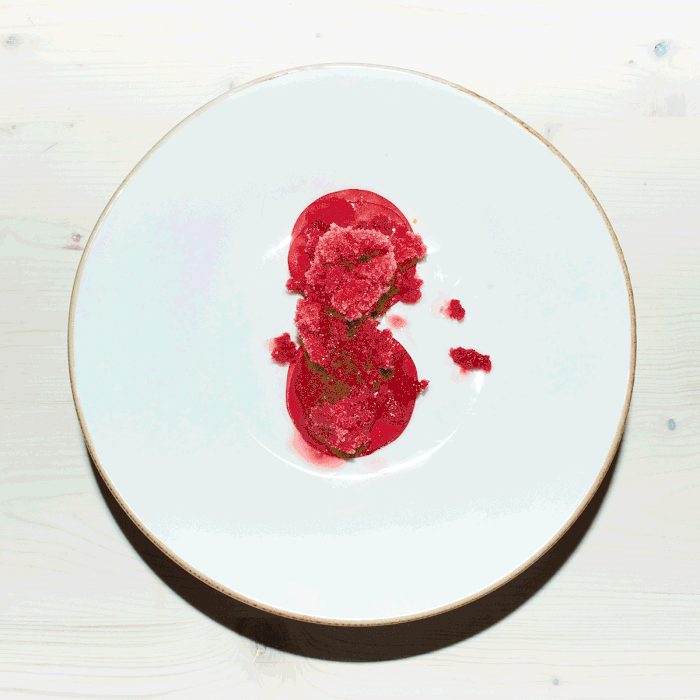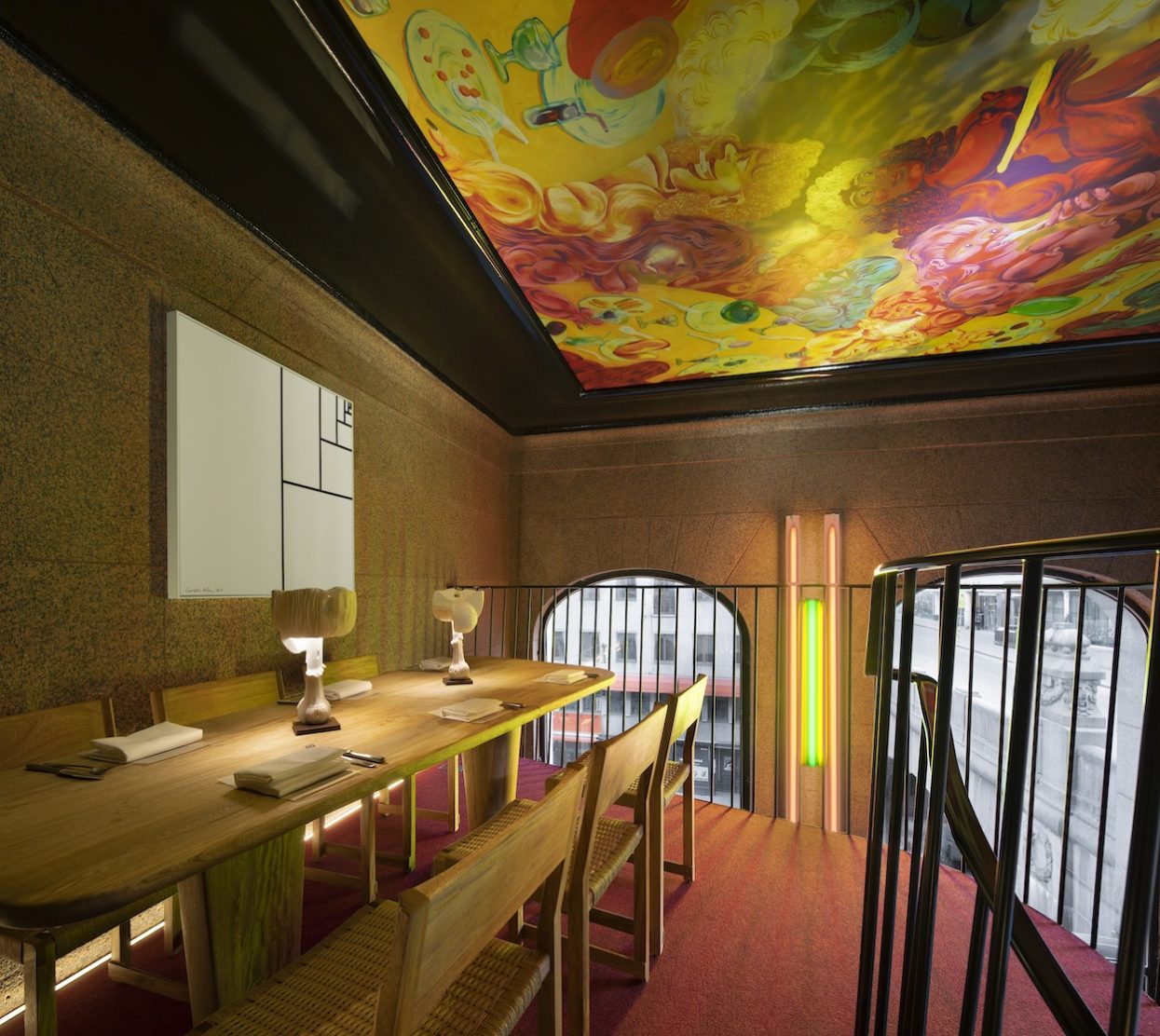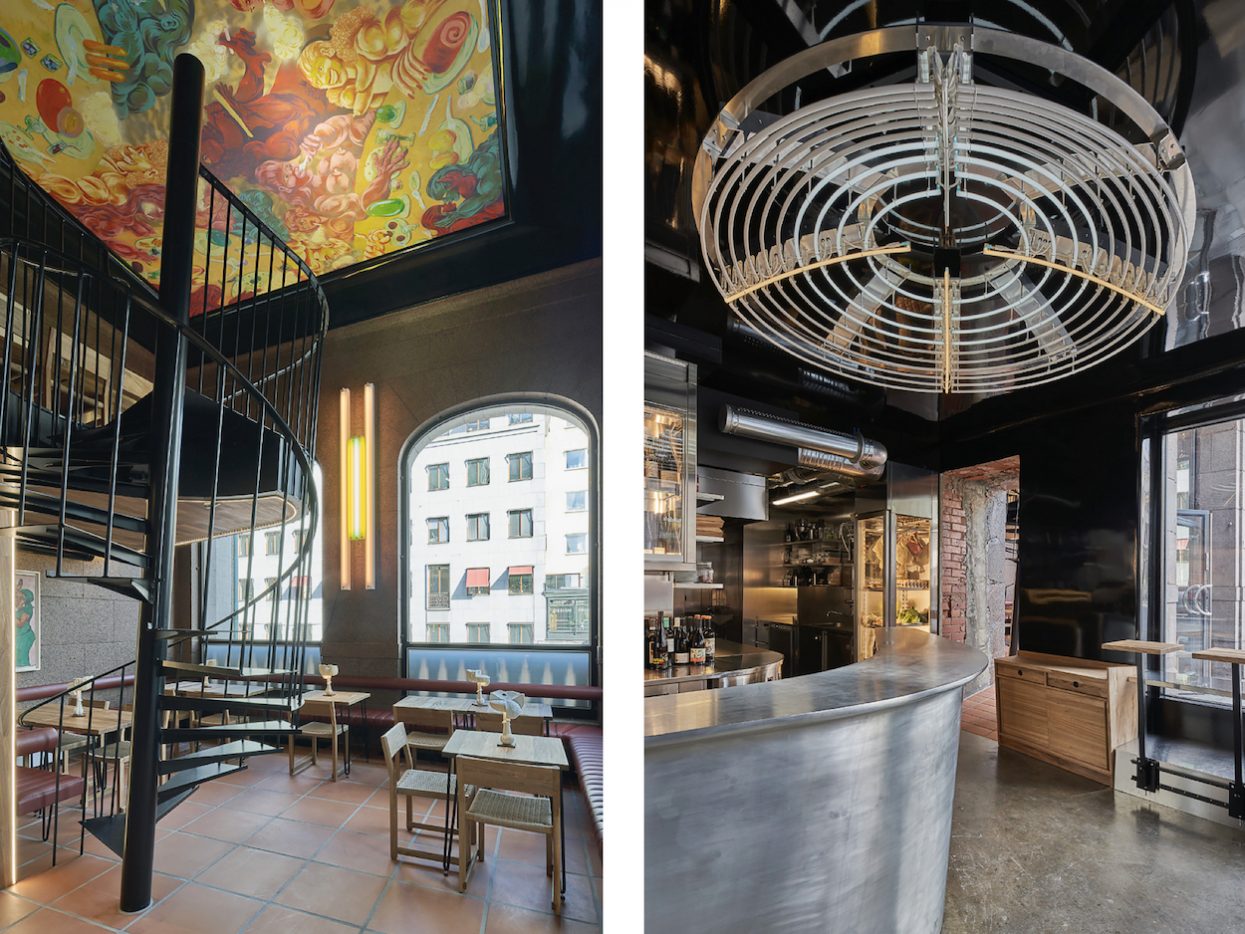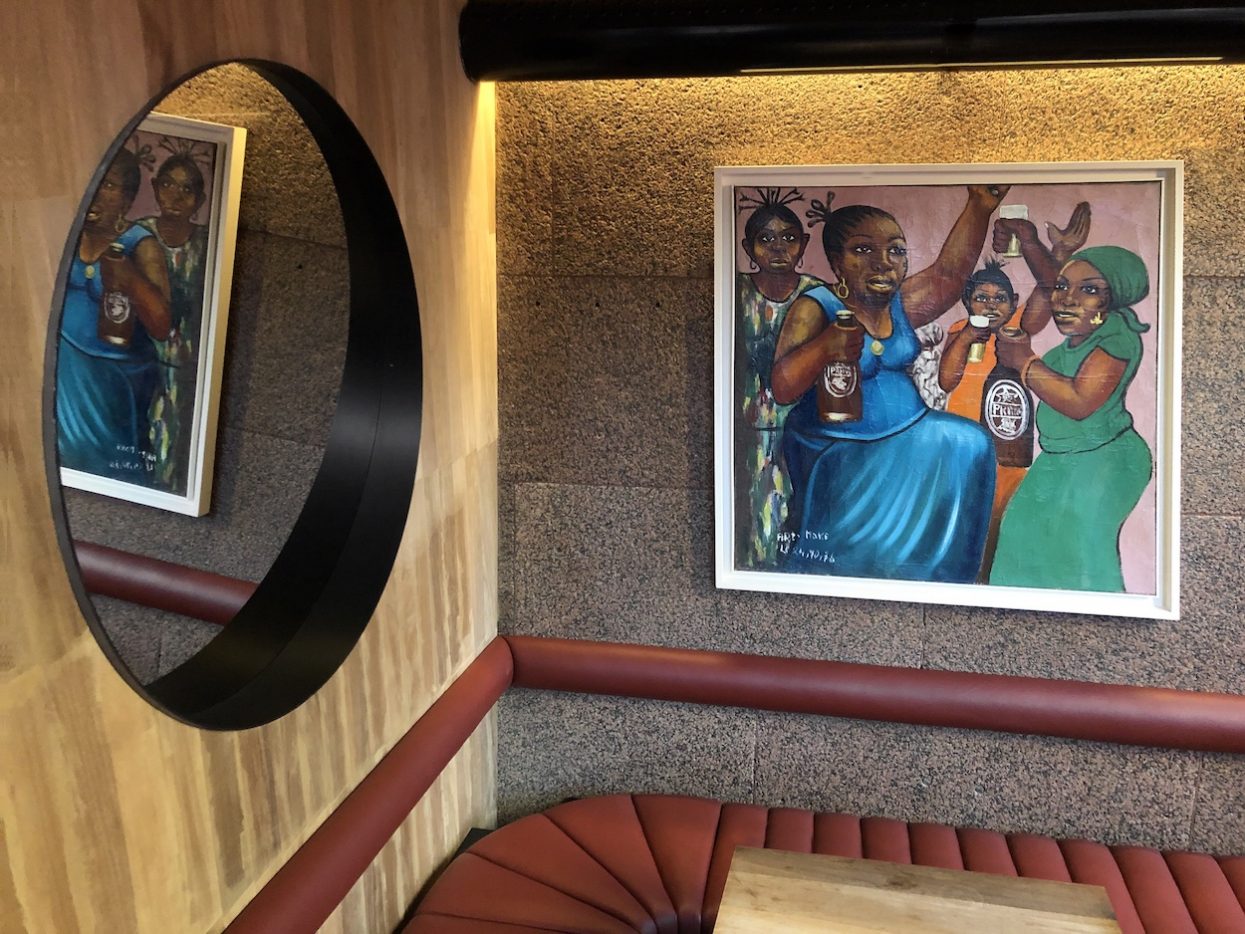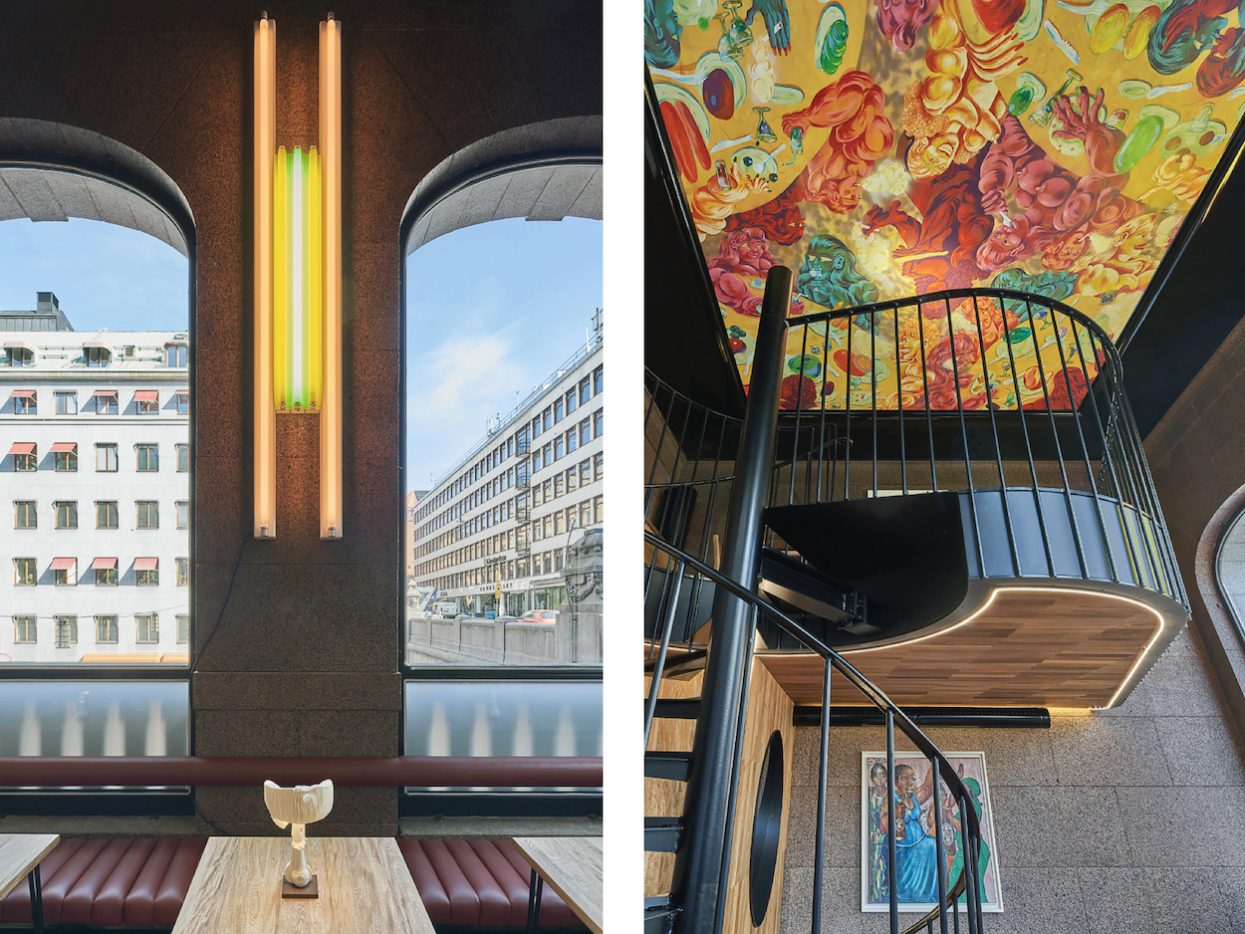In 2008, Carsten Höller joined forces with Fondazione Prada to open a fully functioning restaurant, bar, and disco in London. A vibrant public space that hosted DJ sets and a fashionable crowd during its 24 week run, the Double Club was intended to represent the most challenging elements of both Congolese and Western cultures—a living artwork that encompasses music, cuisine, and design elements, with an emphasis on simply enjoying oneself. “You could say that the real material I’m working with is people’s experience,” Holler said at the time. That notion also extends to his highly sensorial artistic practice, which has yielded a labyrinth of mirrored revolving doors, 130-foot-long giant slides, or a room of spinning upside-down mushrooms that often distorts how we perceive our surroundings.
The Double Club set the blueprint for Brutalisten, a restaurant concept Höller recently opened in Stockholm that adheres to his “Kitchen Manifesto” of rules created in reference to Brutalism. Much like hallmark buildings in the architectural style make use of one primary material—béton brut, or raw concrete—throughout and expose the inner nuts and bolts, each dish at Brutalisten is made using only one ingredient. Höller describes it as honest cooking: “It’s more about the taste of the ingredient—you’re not hiding it through taste layering. If you make a mistake, you can’t just cover it up with some sauce.”
Situated in Stockholm’s central Norrmalm district, the 28-seat restaurant is now the concept’s permanent home following previous outings in Los Angeles. The menu, created by head chef Stefan Eriksson, features daily changing plates with special attention paid to rare ingredients. Each dish is certified by a scale of classification ranging from Semi-Brutalist (using oil or minimal ingredients) to Brutalist (using salt and water) and Orthodox-Brutalist (no additional ingredients). Topping things off is the list of sulphite-free Swedish wines from low-intervention producers, a specially made “Brutalist beer” without hop brewed with only grain malt, and a variety of non-alcoholic drinks made from fruits, algae, and mushrooms by mixologist Kajsa Leander.
Diners will also be seated amongst art hand-picked by Höller, including Ana Benaroya, Dan Flavin, Carl Andre, and Congolese painter Moké. When asked if Brutalisten is an artwork in and of itself, Höller demurred. “Yes and no,” he tells Surface. “No, because it’s a fully functioning restaurant with no specific difference to other restaurants except the food and, to some extent, the environment. Yes because it takes you into unexplored culinary territory based on a set of restraining rules, which may evoke a certain primordial, diffuse uneasiness leading to intense, specific pleasure that I often find in good art. I want people to approach this place from their own position, depending on how they look at things—they may see the restaurant’s artworks as the art factor, and that’s totally fine.”
